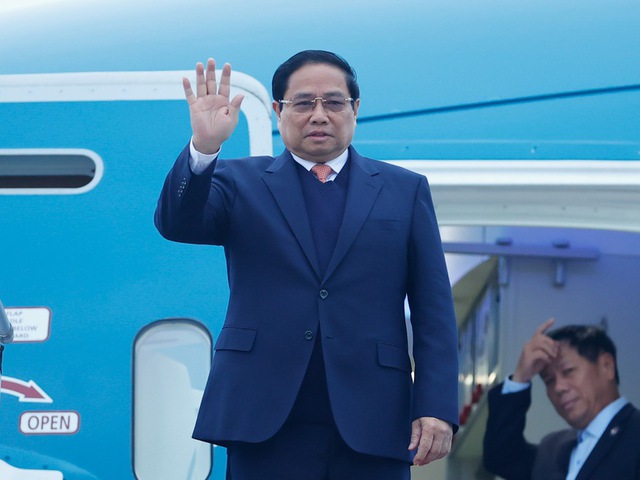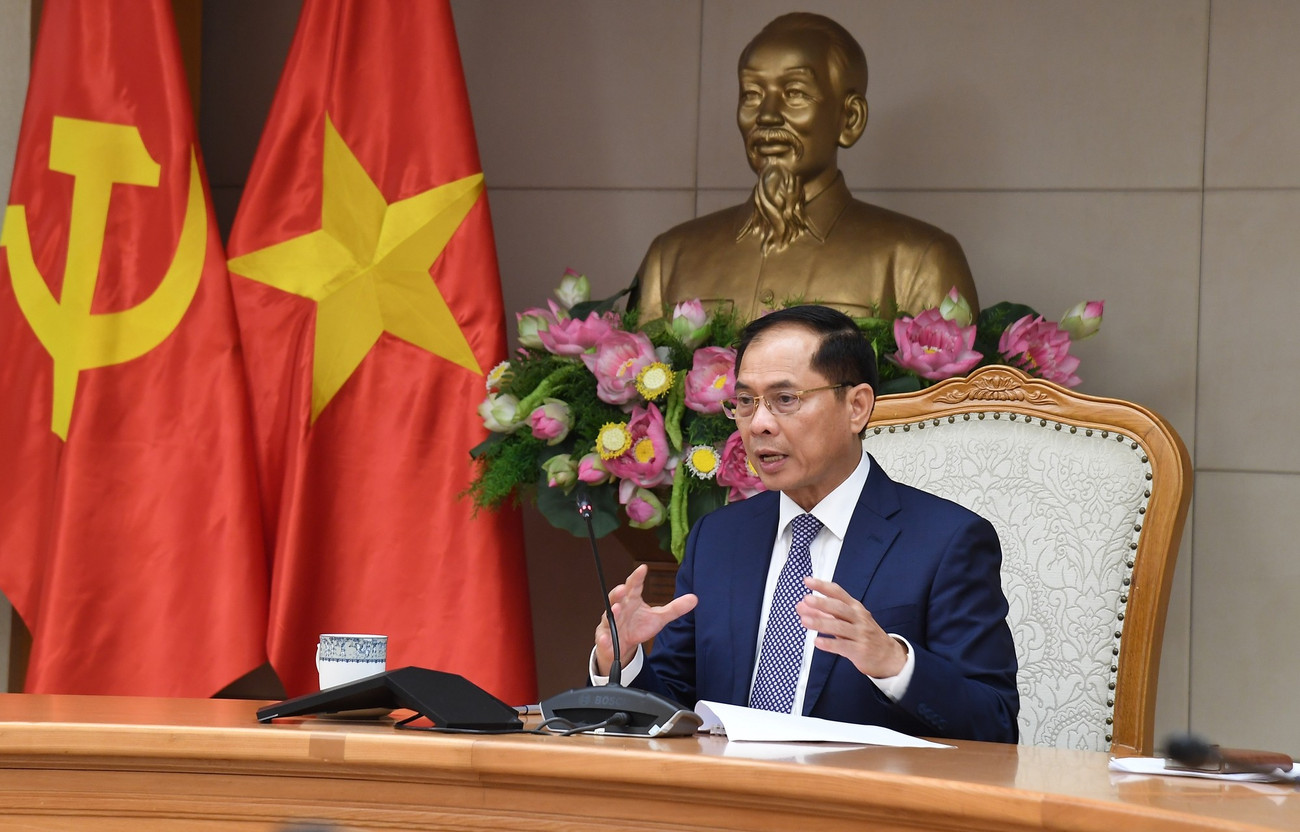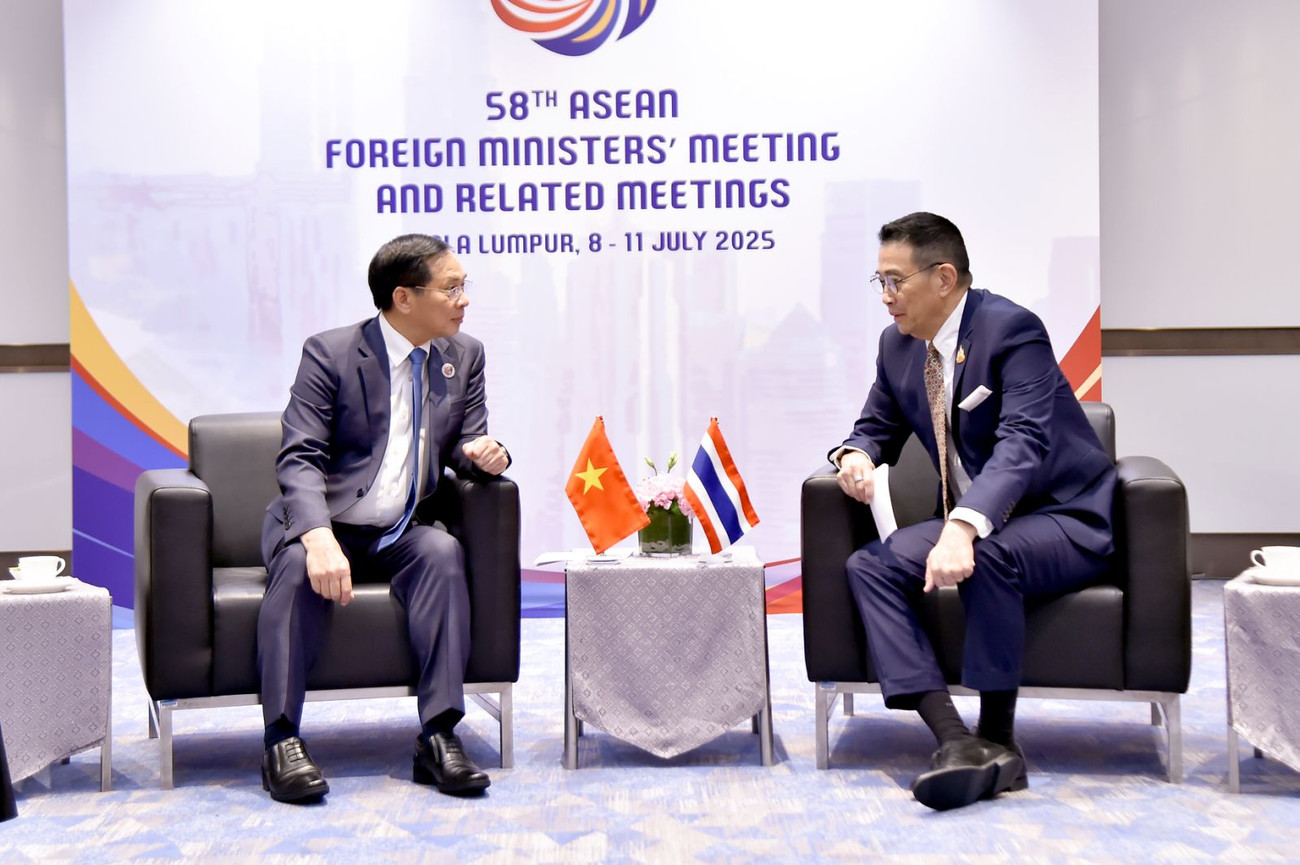MOIT VIETNAM | Anchoring Friendship, Expanding Horizons: Vietnam and Laos Celebrate New Milestone with the Inauguration of Wharf No. 3
/ News / Activities
Anchoring Friendship, Expanding Horizons: Vietnam and Laos Celebrate New Milestone with the Inauguration of Wharf No. 3
In the spirit of enduring friendship and forward-looking cooperation, Vietnam and Laos took another historic step on April 28th, with the official inauguration of Wharf No. 3 at the Lao-Viet International Port in the Vũng Áng Economic Zone, located in Kỳ Anh Town, Hà Tĩnh Province. The ceremony marked not just the launch of a major infrastructure project, but a renewed affirmation of the special solidarity between the two countries—an alliance forged in shared struggle and sustained by mutual trust.
This event, attended by the highest-level leaders of both nations, served as a poignant reminder that the Vietnam–Laos relationship is not only rooted in history but also actively shaping the future. The development of Wharf No. 3 encapsulates the convergence of strategic economic vision, regional cooperation, and the deep emotional ties that bind two countries often described not merely as neighbors, but as brothers.
.jpeg)
The presence of President of Vietnam Lương Cường and Lao General Secretary and President Thongloun Sisoulith at the ceremony sent a powerful signal of the political will and commitment from both sides. Joining them were key figures from both governments and parties, including Vietnamese Politburo members General Phan Văn Giang, Minister of National Defense, and General Lương Tam Quang, Minister of Public Security. Also in attendance were Deputy Prime Minister Nguyễn Chí Dũng, Vice Chairman of the National Assembly Trần Quang Phương, and a delegation of senior officials from Laos, along with representatives of ministries, agencies, and local authorities from both countries.
Their collective participation demonstrated a shared recognition that Wharf No. 3 is not merely an economic asset—it is a symbol of sovereign cooperation, an expression of unity in purpose, and a catalyst for tangible development that extends across borders and sectors.
A Strategic Port with Regional Reach
Wharf No. 3, constructed under the investment license granted by the Hà Tĩnh Provincial Economic Zone Authority, is a state-of-the-art port facility. With a berth length of 225 meters, it is capable of accommodating cargo ships weighing up to 45,000 DWT. Its annual handling capacity of 2.15 million tons represents a significant leap in the region's logistics capability. The project covers nearly 44,000 square meters of land and another 42,000 square meters of water surface, equipped to meet increasing demand for cargo transport in the region.

This wharf joins Wharves No. 1 and 2, creating a dynamic triad of shipping infrastructure that positions the Lao-Viet International Port as a key gateway in Southeast Asia. Once fully operational, the port cluster is expected to handle more than 6.5 million tons of cargo per year, compared to the current throughput of 4.5 million tons—a nearly 50% increase. This will not only meet the growing trade and logistics needs of Vietnam and Laos, but also serve as a conduit for cross-border commerce with northeastern Thailand and other parts of the Greater Mekong Subregion.
A Symbol of Shared Destiny and Economic Sovereignty
Speaking at the event, Lao Deputy Prime Minister Saleumxay Komasith described the inauguration as a “priceless gift” from the Vietnamese Party, State, and people to their Lao counterparts. He emphasized that this development affirms the profound friendship, comprehensive cooperation, and strategic trust that characterize the bilateral relationship—a bond that has remained unshaken through generations.

For Laos, a landlocked country, access to the sea is vital. The port at Vũng Áng provides not only an economic outlet, but a strategic opportunity to integrate more deeply into international markets. Deputy PM Komasith expressed heartfelt gratitude for Vietnam’s support, particularly its decision to allow Lao Asia Telecom, a state-owned enterprise representing the Lao government, to increase its shareholding in the Lao-Viet International Port Joint Stock Company—from 20% to a majority stake of 60%. This not only gives Laos a stronger hand in port governance but also affirms Vietnam’s commitment to shared ownership and mutual benefit.
He also underscored Laos’s interest in deepening operational expertise and hopes to receive technical assistance and knowledge transfer from Vietnam in areas such as port management, digital transformation, and logistics efficiency. The long-term goal, he said, is to ensure that the port is operated not just with technical competence, but with a shared sense of responsibility for delivering broad-based development to both nations.
A National and Regional Growth Engine
From Vietnam’s perspective, Wharf No. 3 is much more than an infrastructure addition. It is a strategic asset that helps transform the Vũng Áng Economic Zone into a major economic hub along the North–South corridor and the East–West Economic Corridor. With its geographical advantage and enhanced capabilities, the wharf will become a key node in the regional logistics network, helping reduce shipping times and costs, attracting investment, and improving Vietnam’s economic competitiveness.

As Deputy Prime Minister Nguyễn Chí Dũng pointed out, the project is part of a broader vision to position Hà Tĩnh as an economic locomotive in central Vietnam. The wharf supports the province’s goal of becoming an investment magnet and logistics center for international trade, with spillover effects that can drive growth across central and northern regions of the country.
For Laos, the project offers a transformational opportunity. It opens a direct gateway to maritime trade, enhances logistical efficiency, reduces transportation costs, and bolsters export-import performance. It also strengthens Laos’s capacity to connect economically with northeastern Thailand, Vietnamese seaports, and beyond, creating a broader web of cross-border integration within the Mekong subregion.
Collective Commitment and Technical Excellence
Deputy PM Nguyễn Chí Dũng praised the collaborative effort and dedication that made the project possible. He acknowledged the critical roles played by the Lao-Viet International Port Joint Stock Company, central and local government agencies, construction contractors, consultants, engineers, and workers who ensured timely and quality completion of this vital infrastructure.
He also lauded the strategic vision and trust of the Lao government in deepening cooperation with Vietnam through real, impactful projects. This partnership, he stressed, is a model of how two countries can join forces to build not only ports and roads but shared futures and common prosperity.

Looking Ahead: Infrastructure, Innovation, and Inclusion
To ensure Wharf No. 3 delivers its full potential, Deputy PM Dũng called for increased investment in complementary infrastructure, including transport links, logistics services, and digital systems. He urged ministries and local authorities from both sides to create a synchronized and enabling environment for efficient port operation and regional connectivity.
He also encouraged businesses and investors—from Vietnam, Laos, and abroad—to actively explore opportunities in the Vũng Áng–Sơn Dương port cluster and surrounding economic zone. The goal, he said, is to leverage the full strategic value of this location by applying modern technologies, enhancing management systems, and embracing digital transformation to build a competitive and future-ready logistics hub.
A Historic Moment, A Shared Future
The inauguration ceremony ended with a symbolic and emotional gesture: President Lương Cường, President Thongloun Sisoulith, and senior leaders of both countries walked together along the new wharf to witness the arrival of the first vessel to dock at Wharf No. 3. The image of the two heads of state standing side by side at the water’s edge, watching trade and connectivity set sail, spoke louder than words about the vision and values uniting Vietnam and Laos.

This project is not just a wharf. It is a manifestation of trust, a pillar of regional integration, and a beacon of friendship between two nations that have always considered each other not simply partners, but family.
As Wharf No. 3 begins its operations, it signals more than cargo movement—it signals a new phase of shared opportunity, enhanced connectivity, and inclusive development that will shape the futures of Vietnam, Laos, and their neighbors in the years to come.
-
/ News / Activities
Prime Minister Pham Minh Chinh’s Strategic Visit to Laos Marks New Chapter in Bilateral Relations
Prime Minister Pham Minh Chinh’s official visit to the Lao People’s Democratic Republic and his co-chairmanship of the 47th meeting of the Vietnam–...
-
/ News
Deepening Cooperation, Strengthening Regional Unity
On the afternoon of July 28, 2025, at the Government Headquarters in Hanoi, Deputy Prime Minister and Minister of Foreign Affairs of Vietnam, Mr. B...
-
/ News / Activities
Vietnam and Laos Accelerate Toward Deeper Regional Integration and Unprecedented Trade Growth
In an era where regional connectivity and economic resilience are critical pillars for national development, Vietnam and Laos are emerging as a mod...





